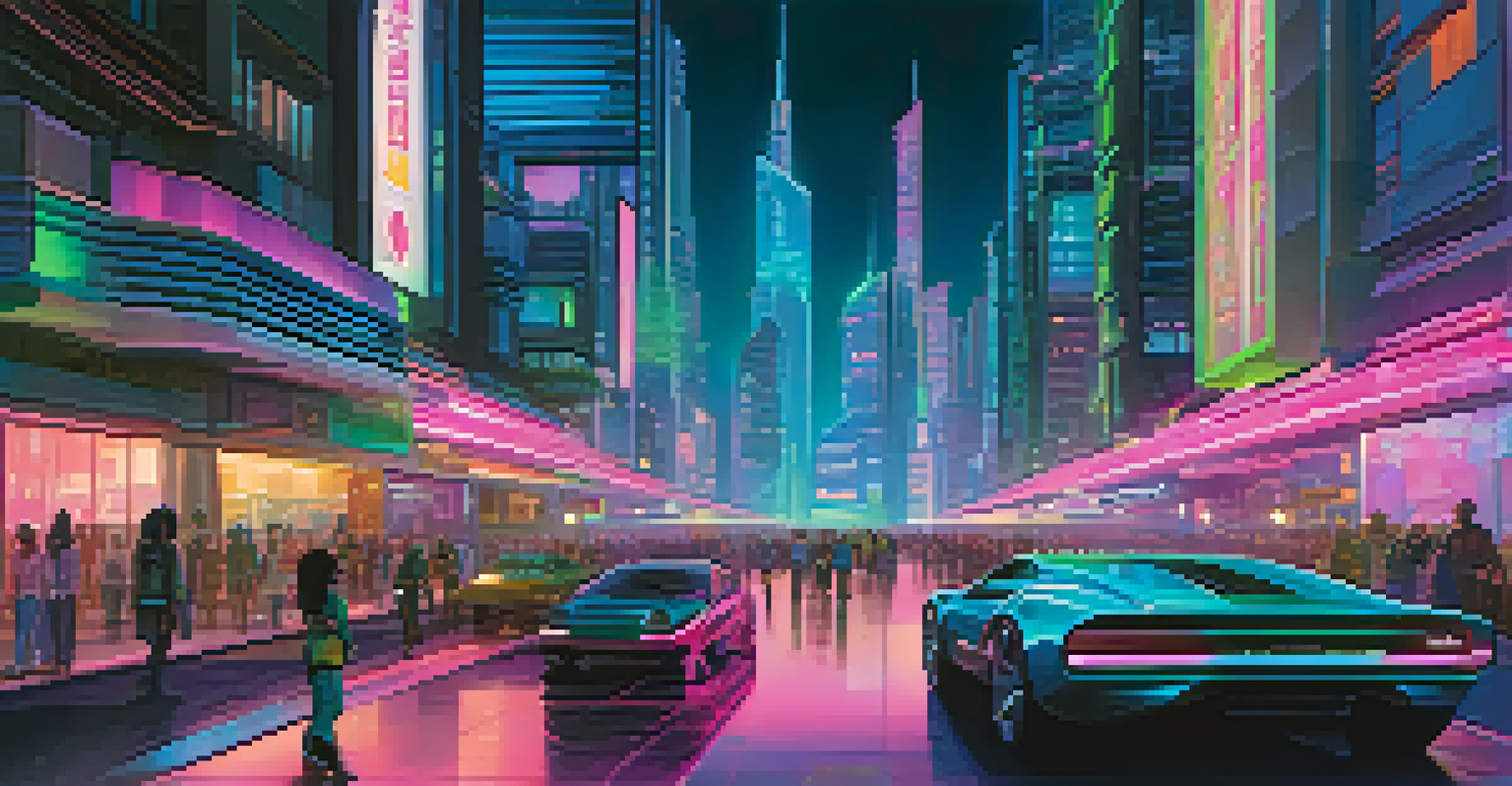The Integration of Special Effects in Storytelling

The Evolution of Special Effects in Film History
Special effects have come a long way since the early days of cinema. From practical effects like miniatures and puppetry to today’s cutting-edge CGI, filmmakers have always sought to create more immersive experiences. For instance, the transformation of King Kong from a stop-motion model to a fully realized digital character showcases this evolution beautifully.
Special effects can create a world that is as real as the one we live in, and they allow us to connect with characters and stories in profound ways.
As technology advanced, so did the ability to tell more complex and engaging stories. The introduction of computerized effects in the late 20th century opened up new avenues for filmmakers, allowing them to visualize scenes that were once deemed impossible. This shift not only enhanced visuals but also deepened emotional connections to the characters and narratives.
Today, special effects play an integral role in storytelling across various genres. They not only support the plot but also help to create worlds that captivate audiences, making the impossible feel tangible and real.
How Special Effects Create Emotional Engagement
One of the most powerful aspects of special effects is their ability to evoke emotions. Imagine watching a thrilling action scene where cars explode and buildings crumble; these visuals heighten the stakes and draw viewers into the moment. For example, the use of slow-motion effects in films like '300' amplifies tension and drama, making every action feel monumental.

Moreover, special effects can also depict fantastical elements that resonate emotionally with the audience. In films like 'Avatar', the stunning visuals of Pandora not only amaze viewers but also invite them to connect with the themes of nature and harmony. This emotional resonance is crucial in making a story memorable.
Evolution of Special Effects
Special effects have transformed from practical methods to advanced CGI, enhancing storytelling and viewer engagement.
By blending visual spectacle with compelling narratives, special effects create a unique blend of excitement and emotional depth. This combination ensures that audiences are not just watching a story unfold but are also feeling it in their hearts.
The Role of Special Effects in World-Building
World-building is a crucial aspect of storytelling, particularly in genres like fantasy and science fiction. Special effects allow filmmakers to create intricate settings that transport audiences to entirely new realms. Think about the detailed landscapes of 'The Lord of the Rings' or the futuristic cities in 'Blade Runner'; these visuals make the worlds feel authentic and immersive.
The best special effects are the ones that enhance the story, not overshadow it.
In addition to visuals, sound design—often enhanced by special effects—plays a significant role in establishing a believable environment. The combination of stunning visuals and immersive audio creates a holistic experience that envelops the audience. For instance, the swirling sound of a lightsaber in 'Star Wars' adds depth to the iconic visual.
Ultimately, effective world-building through special effects not only captures the imagination but also invites viewers to lose themselves in the story. This immersive experience is what makes many films unforgettable.
Challenges and Criticisms of Special Effects
While special effects can elevate a film, they also come with challenges and criticisms. One major concern is the over-reliance on CGI, which can sometimes lead to a disconnect between the audience and the story. When effects overshadow the narrative, viewers may find themselves disengaged, preferring character-driven stories.
Additionally, the rapid advancement of technology can create unrealistic expectations. Audiences may yearn for the stunning visuals they see in blockbuster franchises, making it difficult for smaller films to compete. This disparity can sometimes result in a lack of appreciation for storytelling that relies on practical effects or minimal CGI.
Emotional Engagement Through Effects
Special effects evoke strong emotions, making stories memorable by connecting viewers to thrilling and fantastical elements.
It's essential for filmmakers to strike a balance between special effects and narrative depth. By ensuring that effects serve the story rather than dominate it, they can create a more enriching experience for viewers.
The Future of Special Effects in Storytelling
As technology continues to advance, the future of special effects in storytelling looks promising. Innovations like virtual reality (VR) and augmented reality (AR) are already beginning to change the way stories are told. Imagine stepping into a film where you can interact with characters and environments; this immersive experience could redefine storytelling.
Moreover, artificial intelligence (AI) is also making waves in the realm of special effects. AI can streamline the creation of visual effects, making it easier for filmmakers to bring their visions to life without sacrificing quality. This trend could democratize filmmaking, allowing independent creators to produce high-quality content.
Ultimately, the future of special effects will likely focus on enhancing narratives rather than overshadowing them. As filmmakers continue to explore new technologies, the integration of effects with storytelling will evolve, leading to richer and more engaging experiences for audiences.
Case Studies: Iconic Films and Their Special Effects
Examining iconic films can provide insight into how special effects enhance storytelling. For instance, 'Jurassic Park' revolutionized the industry with its groundbreaking use of CGI and animatronics, bringing dinosaurs to life in a way that captivated audiences. The blend of realistic visuals and compelling storytelling made it a game changer.
Another notable example is 'Inception', where special effects not only dazzled but also served the plot. The iconic scene of a city folding in on itself visually represents the film's complex narrative structure, creating a seamless connection between story and visuals. This highlights how well-executed effects can deepen understanding.
Future Innovations in Storytelling
Emerging technologies like VR and AI promise to revolutionize special effects, focusing on enriching narratives rather than overshadowing them.
These case studies illustrate that when special effects are used thoughtfully, they can transform a film from ordinary to extraordinary. By analyzing these examples, filmmakers can learn how to harness the power of effects to tell their stories more effectively.
Special Effects Beyond Film: Video Games and VR
The influence of special effects extends beyond traditional film into video games and virtual reality. In gaming, special effects enhance gameplay experiences, making environments immersive and interactive. Games like 'The Last of Us' use stunning visuals to create emotional narratives, pulling players into the story.
Moreover, VR technology takes immersion to the next level, allowing users to step into the narrative. With special effects, players can experience thrilling adventures firsthand, from battling dragons to exploring alien worlds. This level of engagement creates a unique blend of storytelling and interaction that traditional media cannot replicate.

As the boundaries between storytelling mediums blur, the integration of special effects will continue to expand. This evolution opens up new possibilities for how stories are told and experienced, making it an exciting time for both creators and audiences alike.